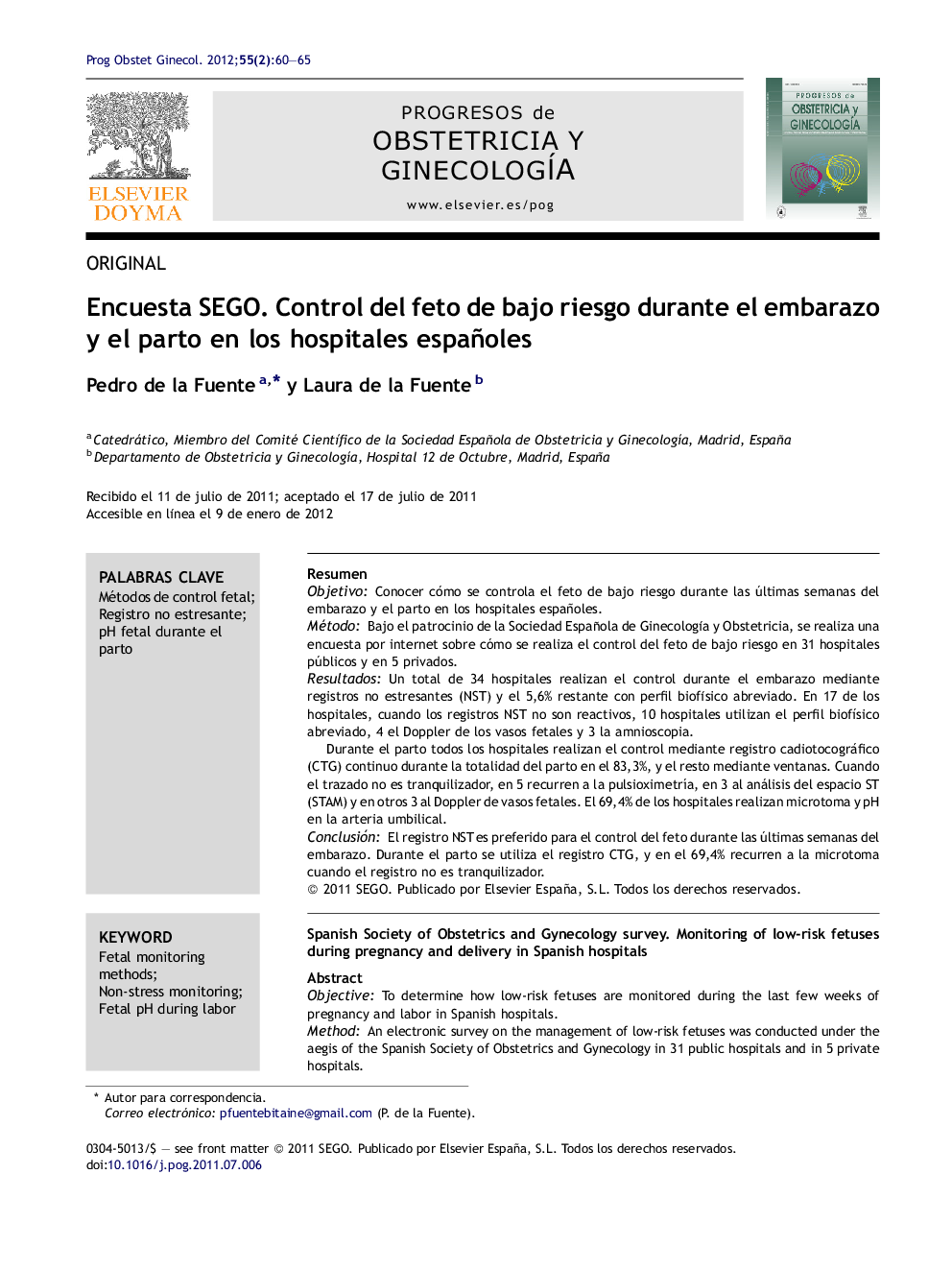| کد مقاله | کد نشریه | سال انتشار | مقاله انگلیسی | نسخه تمام متن |
|---|---|---|---|---|
| 3969057 | 1256546 | 2012 | 6 صفحه PDF | دانلود رایگان |

ResumenObjetivoConocer cómo se controla el feto de bajo riesgo durante las últimas semanas del embarazo y el parto en los hospitales españoles.MétodoBajo el patrocinio de la Sociedad Española de Ginecología y Obstetricia, se realiza una encuesta por internet sobre cómo se realiza el control del feto de bajo riesgo en 31 hospitales públicos y en 5 privados.ResultadosUn total de 34 hospitales realizan el control durante el embarazo mediante registros no estresantes (NST) y el 5,6% restante con perfil biofísico abreviado. En 17 de los hospitales, cuando los registros NST no son reactivos, 10 hospitales utilizan el perfil biofísico abreviado, 4 el Doppler de los vasos fetales y 3 la amnioscopia.Durante el parto todos los hospitales realizan el control mediante registro cadiotocográfico (CTG) continuo durante la totalidad del parto en el 83,3%, y el resto mediante ventanas. Cuando el trazado no es tranquilizador, en 5 recurren a la pulsioximetría, en 3 al análisis del espacio ST (STAM) y en otros 3 al Doppler de vasos fetales. El 69,4% de los hospitales realizan microtoma y pH en la arteria umbilical.ConclusiónEl registro NST es preferido para el control del feto durante las últimas semanas del embarazo. Durante el parto se utiliza el registro CTG, y en el 69,4% recurren a la microtoma cuando el registro no es tranquilizador.
ObjectiveTo determine how low-risk fetuses are monitored during the last few weeks of pregnancy and labor in Spanish hospitals.MethodAn electronic survey on the management of low-risk fetuses was conducted under the aegis of the Spanish Society of Obstetrics and Gynecology in 31 public hospitals and in 5 private hospitals.ResultsDuring pregnancy, a non-stress test (NST) was used in 34 hospitals and the abbreviated biophysical profile was used in 5.6%. When a non-reassuring fetal pattern was found, the abbreviated biophysical profile was used in 10 hospitals, fetal Doppler in four and amnioscopy in three.During labor, all hospitals performed cardiotocographic monitoring (CTG), which was continuous in 83.3% and through windows in the remainder. When the results of CTG were non-reassuring, pulse-oximetry was used in five centers, ST space analysis (STAM) in three and fetal Doppler in a further three. Microtome and umbilical artery pH sampling were performed in 69.4% of hospitals.ConclusionNST is the preferred test for fetal monitoring in the last few weeks of pregnancy. During labor, CTG is currently used, and only 69.4% of centers use microtome when a non-reassuring CTG pattern is observed.
Journal: Progresos de Obstetricia y Ginecología - Volume 55, Issue 2, February 2012, Pages 60–65